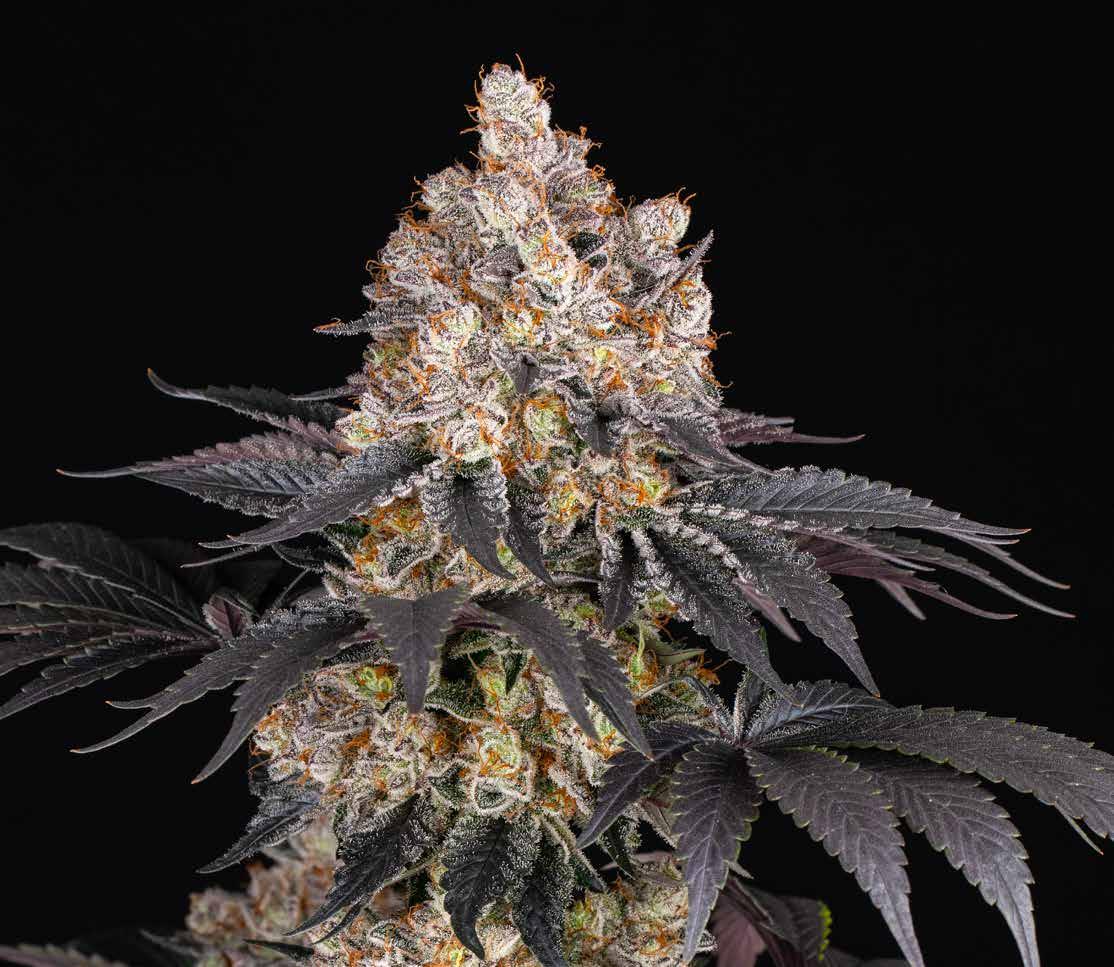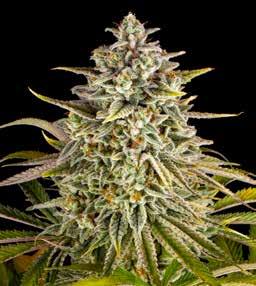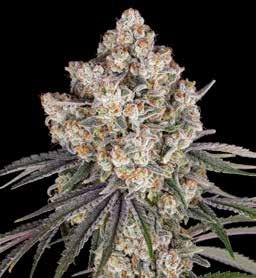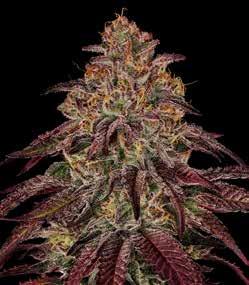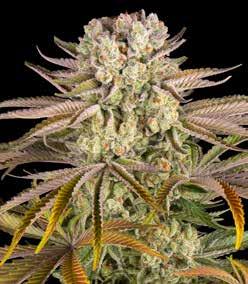




THE GERMAN PARLIAMENT HAS BACKED A NEW LAW TO ALLOW THE RECREATIONAL USE OF CANNABIS
Under the law, over-18s in Germany will be allowed to possess substantial amounts of cannabis, but strict rules will make it difficult to buy the drug. Smoking cannabis in many public spaces will become legal from 1 April 2024.
Possession of up to 25g, equivalent to dozens of strong joints, is to be allowed in public spaces. In private homes the legal limit will be 50g.


Already police in some parts of Germany, such as Berlin, often turn a blind eye to smoking in public, although possession of the drug for recreational use is illegal and can be prosecuted. Use of the drug among young people has been soaring for years despite the existing law, says Health Minister Karl Lauterbach, who is instigating the reforms. He wants to undermine the black market, protect smokers from contaminated cannabis and cut revenue streams for organised crime gangs.
But legal cannabis cafes will not suddenly spring up all over the country. A ferocious debate about decriminalising cannabis has been raging for years in Germany, with doctors’ groups expressing concerns for young people and conservatives saying that liberalisation will fuel drug use.
After a stormy session on Friday in the Bundestag, Germany’s parliament, the vote was eventually passed by 407 votes to 226.

Simone Borchardt of the opposition conservative CDU told MPs that the government had gone ahead with its “completely unnecessary, confused law” regardless of warnings from doctors, police and psychotherapists. But Mr Lauterbach said the current situation was no longer tenable: “The number of consumers aged between 18 and 25 has doubled in the past 10 years.” After the vote he said the law would “dry out the black market” and fix “a failed drug policy”. As so often in Germany, the law approved by MPs is complicated. Smoking cannabis in some areas, such as near
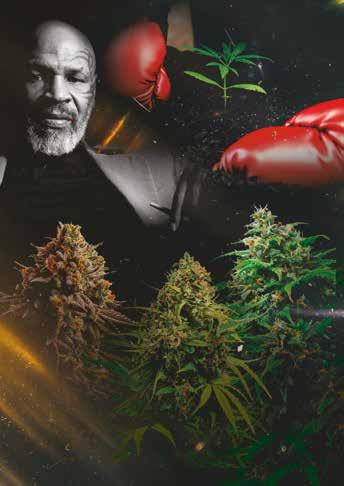
THIS IS JUST THE FIRST ROUND

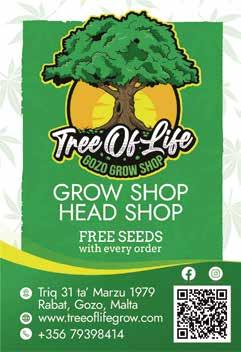
schools and sports grounds, will still be illegal. Crucially, the market will be strictly regulated so buying the drug will not be easy. Original plans to allow licensed shops and pharmacies to sell cannabis have been scrapped over EU concerns that this could lead to a surge in drug exports. Instead, non-commercial members’ clubs, dubbed “cannabis social clubs”, will grow and distribute a limited amount of the drug.
Each club will have an upper limit of 500 members, consuming cannabis onsite will not be allowed, and membership will only be available to German residents. Growing your own cannabis will also be permitted, with up to three marijuana plants allowed per household.
This means that Germany could be in the paradoxical position of allowing possession of rather large amounts of the drug, while at the same time making it difficult to purchase. Regular smokers would benefit, but occasional users would struggle to buy it legally and tourists would be excluded. Critics say this will simply fuel the black market. Over the next few years, the government wants to assess the impact of the new law, and eventually introduce the licensed sale of cannabis. But given how tortuous the debate has been so far, nothing is certain. Meanwhile, opposition conservatives say that if they get into government next year, they will scrap the law entirely.
Germany is unlikely to become Europe’s new Amsterdam anytime soon.
Source: BBC



Banana Punch
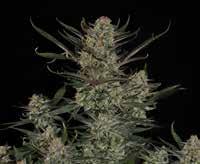

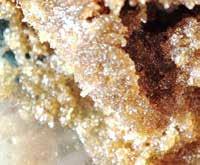


All you want to know about seeds
With Jorge Cervantes



 Markus Berger
Markus Berger

Although cannabis was decriminalised and liberalised in Thailand just two years ago, as Soft Secrets reported in detail, the kingdom‘s government is already planning to take another step backwards. Accordingly, the medical use of cannabis products is to remain legal but the recreational use of cannabis is to be banned again. This was announced by Health Minister Cholnan Srikaew, who has already signed a bill to this effect. The idea of making recreational use illegal again came at the beginning of 2024 from Prime Minister Srettha Thavisin, who presented this move in the form of an electoral promise. However, after the cabinet meeting on 13 February, Cholnan Srikaew rowed back and announced that the planned reform had been put on hold for the time being as Thai politicians first wanted to gather opinions from the population and find out to what extent a new ban on the recreational use of cannabis would make sense and how the ban could be enforced in a private setting. A reform of the drug regulations in Thailand is therefore not to be expected for the time being, partly because the Bhumjaithai party and the Move Forward party are firmly against this measure. It is planned, for instance, that
cannabis use for non-medicinal purposes will involve a fine of 60,000 baht, i.e. about 1560 euros. Only two years ago, several cannabis shops had sprung up in Thailand, and the country‘s government had even given one million cannabis plants to its citizens for free in order to spur the cannabis business. Now, Thai potheads and cannabis enthusiasts must once again fear for their rights and freedom.
Sources: der-farang.com; Thailand Sun
The ‘traffic light’ coalition of SPD, FDP and Bündnis 90/Die Grünen has now finally agreed to decriminalise cannabis in Germany on 1 April. The legal reform and introduction of a Cannabis Act (CanG) does not involve complete legalisation, but just the mitigation of the restrictive Betäubungsmittelgesetz (Narcotics Law) with regard to cannabis. In the future, adults will be allowed to grow up to three female plants at home and carry up to 25 grams of cannabis products with them. Anyone carrying 30 grams or more in public spaces will still be liable to prosecution. Up to 50 grams may be legally kept at home, but quantities of 60 grams or more will remain illegal. Offences can be punished with fines of up to 30,000 euros. Anyone who does not want to grow their own plants can register with a cannabis social club and obtain their weed or hash from there. The proposed regulations will be impractical in a public setting. For example, the consumption of cannabis is to be prohibited within a radius of 100 metres around schools, kindergartens, playgrounds and public sports facilities. In pedestrian zones, consumption will be banned between 7am and 8pm. The bill shall now be approved by the Federal Council, which, according to the German Cannabis Association, can no longer overturn it. The Federal President must then sign the law, which will come into force on the date of its publication in the Official Journal of the Federal Republic of Germany (BGBl.) Source: hanfverband.de; www.ndr.de
Cannabis lovers in Malta are lucky. The country was the first in the EU to legalise the possession, purchase and consumption of psychoactive cannabis a little more than two years ago. This January, the first social club called ‘Cannabis Harm Reduction Association KDD Society’ in Malta could open its doors. More than 150 members registered in the first two days alone after the club opened and are now waiting for their first legal harvest. The club is allowed to accept a maximum of 250 people. These in turn are allowed to purchase seven grams of cannabis per day with a monthly maximum of 50 grams. The five cannabis strains currently on offer have THC levels of 11 to 17 per cent, but more strains are to be added in the future. Anyone who can no longer find a place in such a club or does not wish to join it is allowed grow up to four female cannabis plants in Malta to cater for their own needs - but only when they reach the age of consent (18 years of age).
Source: timesofmalta.com
The current Amsterdam mayor Femke Halsema is in favour of allowing the possession, sale and consumption of cocaine in the future. This former leader of the Dutch Green Party GroenLinks argues that cocaine is less harmful to health than alcohol and that, all in all, the anti-drug laws are not able to curb the trade in this South American narcotic. Femke Halsema also believes that the harmfulness of cocaine is played up in society, which she is clearly right about from a scientific standpoint. Moreover, 80 per cent of Amsterdam’s police officers are concerned with drug-related crimes, which did not stop the banned trade or change the prices of cocaine sold in the streets. Halsema therefore concludes that the ban is simply not working. However, her colleagues of Antwerp and Rotterdam do not share her opinion. Not long ago, Halsema wanted to ban potheads from the cityscape of Amsterdam and thus massively restrict drug tourism.
Source: www.voiceofeurope.com

Kleaner Anti THC Spray is a cleaner that eliminates toxins that remain in the mouth.
Some substances can leave traces in saliva for several days, but with a simple application of the anti-THC Kleaner from Smoking Club Marbella, all remains will be effectively eliminated immediately after application.
Known worldwide, it is validated by a very large number of personalities and used by thousands of drivers.
www.my-kleaner.com



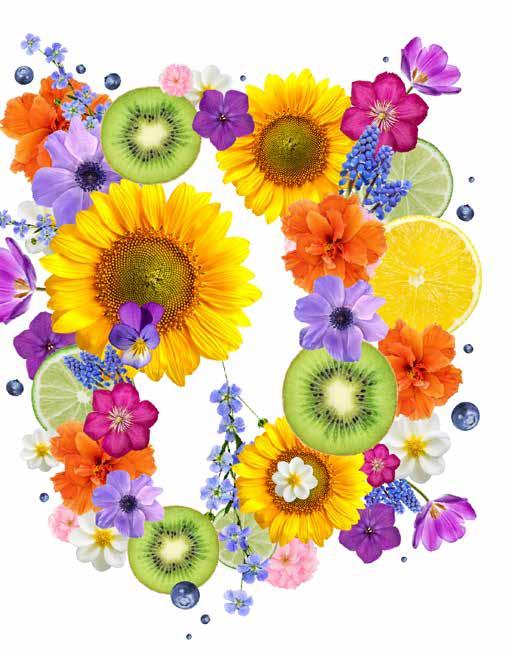

BIOTONEX is a powerful 100% organic stimulator specially designed for the pre-flowering phase. It is an exclusive formula from Cannaboom SL, a historic Spanish fertiliser company that distributes its products worldwide under the brand name ‘La poción del Brujo’. It is a superconcentrated product (0.2ml per litre of water) that can be applied from early as the last week of the vegetative phase to the third/fourth week of flowering.
Biotonex brings forward (by one week at the most) the start of flowering and stimulates the formation of flowers, which will develop in greater quantity and with a shorter internode space, making the plant more compact and productive. In addition, Biotonex‘s special formula helps stop the stretching of the plant, which is typical at the beginning of the flowering phase, slows down its growth in height and at the same time increases the number of side branches. For all of these reasons, Biotonex helps the plant develop an optimal structure for the flowering phase, making it more productive, compact and resistant. Furthermore, by increasing the number of shoots, it allows for larger and denser buds..
www.cannaboom.es








Bloombastic with a green twist! Bi-Bloombastic enhances flavour and accelerates flower formation but also contains organic compounds. It is a highly concentrated all-in-one bloom additive for the environmentally conscious grower. It works as a fertiliser, stimulator, hardener, taste
enhancer and activator for various enzymatic processes. The ingredients in Bi-Bloombastic support micro-organisms during the flowering phase. This ensures a healthy root system and eventually, a good yield!
Roberto Romagnino, known artistically as Dirty White, has been involved in the cannabis world for twenty years. After studying everything he could, delving into everything he found, and putting into practice everything he read, he finally decided to offer the planet a way to approach the world of cannabis without getting lost on the web. Roberto, indeed, firmly believes in empirical experience, and it is from this conviction that Growverse was born: a new dimension with infinite potential where cannabis and his passion merge into the metaverse.
Why combine the metaverse with the world of cannabis?
The global cannabis community counts hundreds of millions of people, but a connection deficit persists among them. Normally, the opportunity for dialogue is confined to specific occasions such as fairs or Cups. To truly connect them, I envisioned creating a 4.0 social network. I firmly believe that in the next ten years, all activities will shift into the virtual reality of the metaverse. The revolution is just around the corner.
What should we expect?
Inside Growverse, you will find a geolocated virtual growshop, a cannabis library, the congress hall with Growfounding, the University of Cannabis, a permanent fair, a grow room, an art gallery, and a virtual NFT buying and selling Marketplace, with an area dedicated to job searches and offers. Whether for leisure or professional reasons, Growverse is aimed at both the casual consumer and all the professionals involved in the cannabis supply chain.
Why is Growverse much more than a game?
Growverse is the world’s first metaverse that is truly monetized and can be customized by the user through a web app. People will have a different interface depending on their declared identity. They can attend classes, host conferences and events, concerts, but also work, for
example, as translators or teachers. Users can then exchange Leaves and thus monetize their creations...
What are the Leaves?
Leaves will be the official token of Growverse and can be bought or earned by playing.
Can you give us an example?
Imagine an artist performing in concert: for 90% of the earnings, they will be paid by the sum of Leaves collected from the audience’s presence. Thanks to Circle, with the Leaf pegged 1:1 with USDC [Note: digital stablecoin pegged to the US dollar], if 10,000 people pay 1 Leaf, the artist will earn 9,000 Leaves (immediately withdrawable).
Leaves are for the use and consumption of users, but how does it work for companies?
Every company that pays to be in the metaverse contributes to its ecosystem. The Leaf can be worth 1 USDC, thanks to two inputs: its purchase and advertising videos. By introducing the concept of Caveou, namely giving up our profit, Growverse becomes tangibly monetizable.
Can you explain better?
The purchased Leaves send the dollar equivalent to Caveou, these, not being collected by Growverse, create a sort of “gold reserve” that gives the Leaves a counter-guaranteed value. The same applies to advertising. A user who watches a video will receive a free Leaf and Growverse, collecting that dollar from the company that paid for the video playback, will send it to Caveou, thus giving a 1:1 value to the Leaf. Essentially, the user spends without paying, but the collector does so for real.
How do you ensure the security of transactions and privacy?
The Growverse payment system, based on the virtual currency Leaf, places utmost attention on security and feasibility. The stablecoin nature of the Leaf, linked to the dollar’s value, offers a reliable and consistent virtual curren-

cy experience. Secure wallet management through Circle, using USDC as a withdrawal currency, further enhances the financial integrity of the Growverse ecosystem. Smart Contracts based on the robust framework of OpenZeppelin ensure the highest standards of functionality and precision. For privacy, we rely on Epic Online Services, which, using Epic Games accounts, manages users’ privacy policy and DPO.
The structure of Growverse seems complex because it is futuristically altruistic, but beyond the financial aspect, what makes you most proud of this project?
Three epoch-making innovations. The first is the ability to create customized clothing; the second is the advertising avatar that opens up virtual marketing towards new frontiers. Our avatar can wear a T-shirt with the company logo, which will be linked to a URL that opens directly within the metaverse thanks to Growser, our proprietary browser that allows
navigating
How can you sign up for Growverse?
Being licensed by Epic Games, you need to create your account on www.epicgames.com or use an existing account to log in to Growverse, designed for ps5/xbox/android/apple/ios/pc/ oculus. Once this operation is completed, connect to our web app’s website at https://app. growverse.net/ and welcome to the future!
Do you already have a date in mind for the presentation?
In April, we will open the doors to the world and get ready because, being developed in Unreal Engine 5.3, its graphics will leave you speechless. We are proud to have brought two historical realities, Soft Secrets and BSF Seed Bank, into Growverse, so remember: “One love, one passion, one community.”
To not miss the opportunity of your life, meet us at: www.growverse.net
This precious plant, which ADVANCED SEEDS decided to call San Bacio Burger, contains the best characteristics of Sunset Sherbet and GSC Thin Mint. Another aspect to take into account is its high THC content, around 27%, and considerable CBD content, which gives this plant a powerful narcotic effect that can be perceived very quickly.
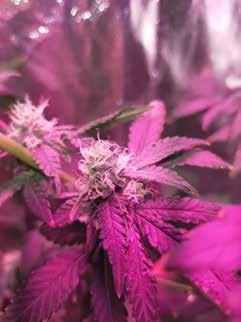
The plant has medium-to-tall size and a stout structure. It is predominantly indica, with a 65% indica and 35% sativa linage. Due to this genetic legacy, it produces top quality compact, medium-sized flowers with a very high quantity of top quality trichomes per square centimetre. When consuming San Bacio Burger, its bouquet

does not go unnoticed with both sweet notes of berries, lemon and pine and pungent earthy notes, which will satisfy the terpene appetite of any consumer with a fine palate.
Advanced Seeds assure us that its indoor flowering period is 9 to 10 weeks whereas, in outdoor cultivation, it flowers in mid-October, if the weather conditions are more or less stable.
This Advanced Seeds strain is perfect for demanding growers looking for a strong, medium-sized plant with a complex flavour and terpene profile. It requires some advanced knowledge of cultivation, because its lineage makes it a plant with a lot of energy and very extensive branching. Given its very long branches, which can be quite easily obtained, its stems and leaves are obviously more exposed to deficits and attacks of pathogens. Therefore, a certain amount of knowledge is needed to prevent greater consequences and treat them with foresight. As mentioned above, the flowers produced by San Bacio Burger from Advanced Seeds are of very good quality. These medium-sized flowers produce a large amount of superior trichomes per square centimetre that are highly appreciated by extract and hashish producers, who normally use non-aggressive methods in their processing. This also explains the supreme quality level achieved. In the last weeks of the flowering phase, purplish tones and a strong aroma of vanilla cream can be appreciated. The plant produces a very intense high and, despite being a sativa-dominant hybrid, a very physical and intense stone.
We grew a pack of 5+2 seeds. The first impression we had was that they were very similar to each other in appearance, with a convex shape, dark brown in colour and with a little marked veining. In the germination process, we used 4 of the 7 seeds, as we always keep a few to replace those that do not germinate for one reason or another, or to make a comparison with the rest. Germination was done in a Petri dish, as usual, to ensure clean germination without external pathogens, which can interfere in the normal germination cycle of the seed. After 24 hours, the perianths of the 4 seeds could be seen opening, although they did so at different times, not exceeding 72 hours. After 72 hours, the radicle of the first seeds was seen growing very quickly in search of light.
It was time to put them into the substrate, using 2.5 litre pots, and keep them in a 18h light cycle, with the intention of transplanting them in the future to 10-litre pots. In the following 72 hours we could see how they were making their way through the substrate. We continued to use our usual substrate, a mixture of bokashi and blond peat to favour good drainage and oxygenation of the substrate. In the first week of life, every two days, they were fed a solution of root stimulant dissolved in osmosed water in an amount of 250 ml per pot. We also used a 315W LEC lamp in its highest position, so as not to overexpose the plants to the light beam. After about 10 days, the cotyledons were about 4 centimetres long due to the constant search for a light source vital for their development. To fertilise our plants, we replaced the previous rooting fertiliser with an organic growth fertiliser in low doses, which could

be easily assimilated. The last week of growth was decisive. We transplanted them into 10 litre pots, we also increased watering to 350 ml of water and the fertiliser dose by between 5% and 7%. We lowered the light point to about 30 cm to stimulate the growth of leaves and strengthen the root ball of the plant. Finally, we could see the branches develop very quickly, with the leaves invading the middle-to-upper part of the plant and creating a leafy crown.
After the first week and with a 12-hour light cycle, the first details of pre-flowering could be seen, e.g., the appearance of the first stipules of the plant. The next change that could be seen on the plant was the massive proliferation of pistils, which allowed us to appreciate some premature sweet scents. From the third week of flowering, the lamp was placed at about 50 centimetres from the plants, which encouraged the growth of the pistils into vigorous buds. In these buds, we could see a large amount of still extremely white trichomes which, while being immature as their appearance suggested, were quite sticky and
shiny and, as said above, perfect for placing in a sieve and making an extract. In the last weeks of flowering, the plants entered the final phase of ripening. As a result, during the last two weeks, we washed the roots heavily, as a key step to get rid of excess salts and different compounds that may remain in the substrate.
Within nine to ten weeks, our San Bacio Burger specimens were totally ripe. They were medium sized as expected and showed very marked compactness not merely in the plant structure but also in flowers, which were full of trichomes and had a light green hue. Finally, in these last two weeks of ripening, the previously perceived scents changed completely, going from fruity to a mixture of vanilla, anise, pine, wet earth, burnt caramel, pepper... Another point to highlight was the hardness of their flowers, which, despite their medium size, were very hard and full of trichomes. At the time of drying, we used a traditional dryer where we could place our flowers in vertical position for the first phase of drying. After two weeks hanging in this dryer, slight discolouration and reduction in size could be seen due to water evaporation. Finally, as the flowers reached their optimum drying point, they were placed in airtight cans, in order for them to retain their scent, develop all their organoleptic properties, and gain additional compactness. After two weeks, the flowers were placed in their final glass jars for conservation and curing.
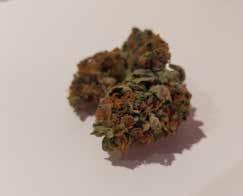
A

The Doc, Ellis D., Mr. Knolle and Mr. Power-Planter met the other day for a chilled get-together, with each of them being expected to bring a self-grown weed strain along as exceptional as possible. By means of vaporizer blind-testing and awarding points, the look, smell and effect were to be rated to choose the best strain of the day. The gang started off in the early afternoon already to take sufficient breaks between the single strains and get their heads reasonably clear. As each of these cannabis afficionados is a very experienced excellent grower and has got a select strain taste, it was a tight competition, but in the end a champion a stood out. About which Ellis D. said before he knew what exactly it was, “this strain is all banana, it really smells and tastes like this, very intriguing. These heavily trichome-encrusted flowers are sticky as hell and have given me a tremendously powerful super-stoned effect.” Mr. Knolle laughingly agreed, “Such is this weed’s banana flavour that I guess a monkey would eagerly inhale this vapour, too! And then do his monkey business more than ever…” And Mr. Power-Planter jested, “yah yah, Monkey see, monkey vape – the two of you are some real weed apes! But it’s true, that much of a banana aroma I’ve not come across yet as regards marijuana, that’s pretty extraordinary. It packs such a wallop that now in the later evening I’m glad it was the last variety to be sampled today, rien ne va plus! Dockie, you’ve entered this kind of banana weed, so tell us now what it actually is? Which he did, beaming with joy: “What has that utterly dazed and bananized you all, is Banana Punch by Barney’s Farm!”

Banana Punch had piqued The Doc’s curiosity…
He had grown this winning strain a short while ago in a separate grow tent, not in his standard grow room. For that tent run, he had envisaged a few exotic pure sativa strains and therefore intended to apply a very brief veg time of 12 days.
Shortly before the grow began, he couldn’t resist to experimentally add a Banana Punch plant to this cycle – he had actually intended to grow two plants of this strain not before his next regular cycle in the grow room. While 12 days veg time were too brief of course for a slightly indica-dominant variety (55%), The
Doc was mainly out for that special flavour and not so much a big yield – after he had read Barney’s Farm’s strain description of Banana Punch, he had become very curious about it. Because both the scent and taste of this hybrid bred from Banana OG and Purple Punch were supposed to remind of ripe bananas, plus something berrylicious and citrusy added, a rich flavour built on a prominent presence of limonene, pinene, myrcene und caryophyllene.
Barney’s promised strong robust plants suitable for a wide range of cultivation methods, delivering ample yields of 600-650g per sqm within a moderate 60-65 days of blooming. Banana Punch was also supposed to have
inherited that violet play of colours from her Purple Punch father and provide a strongly calming and relaxing, at the same time highly exhilarating effect. Certainly much of interest to outdoor gardeners is its early finish under natural light already at the end of September, with plant heights of about two metres and most generous yields of up to 1.5 kg per plant.
Germinating the feminised Banana Punch seed was a cinch, as always with Barney’s Farm strains – hardly three days had passed when the seedling popped out of the ground. As if it had known it had only little time to grow
vegetatively, it got a move on – after twelve days, the young plant had arrived at a height of 16 cm and established three internodes, out of the axils of which lateral branches were already starting to shoot outwards. The plant produced dark green and fairly slender leaves.
The flowering stage: Adorable mega buds with a snow-white crystalline look
The Doc happily noticed that his Banana Punch plant was busily puffing up during the first weeks of flowering, gaining much height and width. What he also noticed soon was a most diligent blooming activity revealed by the
plant, after a few weeks numerous bulbous flower clusters had emerged along the stem and lateral branches – “seems as if these are going to become some real fatties!”, rejoiced The Doc. Oh yes, indeed: The buds developed into adorable mega buds in a “beefy” thick indica style and in doing so were oozing resin out like hell – the trichome output was colossal and conjured a gorgeous snow-white crystal look onto the plant. “Once again a Barney’ Farm variety is competing for the trichome throne! Although abundant resin richness is typical of this Dutch seed company, as witnes-
of flowering, The Doc considered the buds as mature and cut them off.
Given the buds’ chubbiness, he had been optimistic about the final dry result, but tipping the scales at 68 grams then exceeded his expectations. „Small, but quite mighty! For a plant height of merely 40 cm and a markedly substandard size, this is a princely yield“, the grand old grow master praised his Banana

sed by me so many times in recent years, it’s fascinating to experience this each time anew. The Banana Punch plant wasn’t the biggest of course in the end, having reached a final 40 cm tall, but had nevertheless managed to generate a massive head bud plus several grand side tops. Only some of the upper flower leaves exhibited a slight touch of violet, but for The Doc it was obvious that a cross made with just one parental purple strain doesn’t produce an all-purple crop.
It was more important to him that Banana OG had fully come through aroma-wise and breathed its startling scent of ripe bananas into Banana Punch. After very timely 62 days

Genetics Banana Punch (Banana OG x Purple Punch)
Vegetative stage 12 days (after germination)
Flowering stage 62 days / 60-65 days in general
Medium Bionova Bio Soilmix, 11 litre pots
pH 6.4-6.7
EC 1.2–1.6 mS
Light 1 x SANlight EVO 4 (250 W)
Punch plant and added, “the dried flowers are distinctly smelling of bananas, it’s a true feast to the nose!”
When he had tested the weed then with his Crafty+ vaporizer and convinced himself of its mighty indica-driven, super stoned potency and delicious fruity-sweet banana taste, he was definitely sure it had what it takes to be a champion and would certainly also deeply impress his pals… which was going to happen then, indeed!
Cultivation data:
Temperature 19-27°C
Air humidity 40-60%
Watering manually
Fertilisation Bionova Soil Supermix, plus PK 13-14 in the flowering stage
Additives/stimulants Bionova Silution, The Missing Link, Vitasol and X-cel
Tools CleanLight Pro for mould prevention
Height 40 cm
Yield 68 g

Seedbank: Dutch Passion
Strain: Amsterdam Amnesia
Pot size: 10 liter pot
Medium: Coco + Atami Upgrade
Lighting: 2 x SANlight Gen 2
Nutrients: Atami NRG line + Great White Myco inoculant
Veg time (18/6): 4.5 weeks
Veg Temp: 24 degrees Celsius
Veg humidity: 75%
Flowering time (12/12): 69 days
Flowering Temp: 23 degrees Celsius
Flowering humidity: 40% humidity
The grow room temperature with both SANlight on is 24.2 degrees and a consistent relative humidity of 75%. There are 2 small sized oscillating fans inside the tent which keep the air fresh and cool. Week 1 of the vegetative period and the seed has popped out after 4 days since planting. I feed 1 ml per liter of Atami NRG Growth - C, Alga - C, Root - C, Cannazyme and Cal Mag and lightly water making sure I do not over water the seedlings.

I decided to grow some Amsterdam Amnesia fem from Dutch Passion, as I love Haze and my jars are below the halfway mark. I have smoked tons of Amnesia living in the UK and Amsterdam, so I was excited to try this version from an old school long-standing seed company.
The Amsterdam Amnesia is growing quickly with long and thin leaves shaped like a sativa, and open growth structure. There is an inch space between each node, and the plant is growing taller each day. I noticed on day 25 that the roots are now coming out of the bottom of the pots, and look like a bunch of thick bean sprouts. The nutrient solution is now fed to 3 ml per liter of Atami Growth - C, Alga - C, Root - C, Cannazyme and 1 ml per liter of Cal Mag.
Week 4 of the vegetative period and now the plant is topped once, and then super cropped. This just means I pop the stems until I hear and feel a popping sensation, which indicates the inner cell walls have been broken and will now be repaired with a thick wooden knuckle where the squeeze occurred.
I measured the Amsterdam Amnesia at a height of 59 cm tall. She has distinct long and thin fingered fan leaves and bushy and open structure. A stem rub reveals a floral lemon and earthy aroma that smells like lemon peel and rubber.
On day 14 of the flowering period, I feed 5 ml per liter of Growth - C, Alga - C, Cannazyme, Flower - C and Bloom - C, NRG Flavor and Cal Mag. At this point there are bright white hairs appearing all over the plant, abundance of fuzzy pre-flowers indicating it will be a good yielding variety. The height now after stretching is 119 cm tall with quite a lot to go on the stretch.
Day 35 and the height is now 151 cm tall and the aroma of the developing buds can be described as earthy, sharp, citrus, floral bleach profile with a pungent edge. I take this chance to insert 150 cm tall bamboo canes around the side of the pots and attach them to the plants using green wire.
By day 40, her buds are stacking up and getting swollen. They grow with a pointy but small sized calyx with a dense structure. I continue to feed at a rate of 5 ml per liter of Growth - C, Alga - C, Cannazyme, Flower - C and Bloom - C, NRG Flavor and Cal Mag
On day 63 I decide to flush the Amsterdam Amnesia, so I feed 5 ml per liter of Cannazyme and water. In one week, she will be chopped and left to dry. The terpenes can be described as an eye watering, with lemon chemical terpenes. This plant is extremely sticky with resinous buds that have tall and pointy calyx
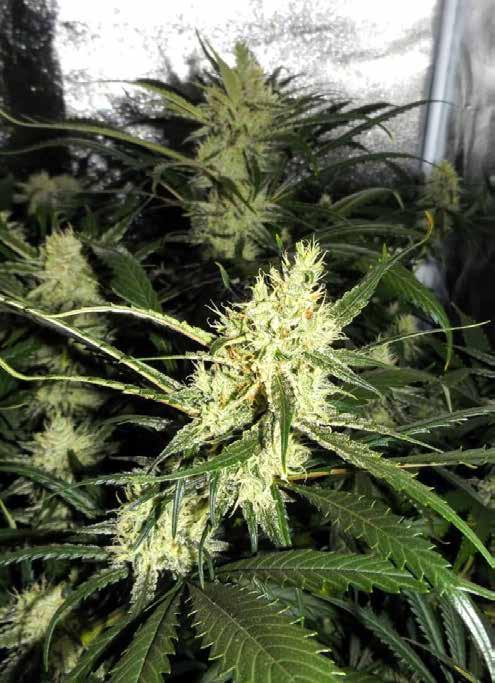
coated in silver trichomes. Today is harvest day, which makes it 69 full days of 12/12. I took one final measurement at 151 cm tall. The buds are thick and compact, combined with a high amount of frosty leaves to use for trim.
Now the plant will be chopped and hung inside a grow tent that is controlled and consistently 15 degrees Celsius and 50 relative humidity. I personally find keeping the plants drying out for a full 14 days is the optimal time frame to achieve the best tasting flavours.
MY CONCLUSION
Overall, she was a large sized plant that likes lots of space and head height. It is best to add
support during early flowering, due to Amsterdam Amnesia being a heavy feeding variety that packed on weight with no problems. This strain is best suited for people who are used to tall growing bushy sativa, however a wonderful strain for making hash or extracts due to the quality of trim produced.
The effect is extremely motivating, energetic, creative and perfect for the morning and afternoons, but can keep you up late night so better for evenings. A powerful cerebral effect with an amazing classic old school citrus floral flavour. For those in search of commercial scale yields, then Amsterdam Amnesia is certainly for you. Every bud she produced was a compact, resinous acorn sized nug and was full from head to toe with buds!


Everyone has their own personal preference and choice when it comes to which strain they will be growing out. When it comes to planning ahead for the outdoor seasons, it is worth going through a short list of what to consider, to allow you to achieve the best results possible under the most ideal circumstances. In this article, I break down a bunch of things that will help you make the best decision when it comes to which strain to grow outside.
THINGS TO CONSIDER
You may already have your heart set on the latest Zkittles or Runtz hybrid, but not everyone will be able to grow any strain. Depending on where you live plays a massive role in how the plants will mature and yield. Below are some variables that will help you narrow down the most practical strain.
Feminized or regular sex?
Old school growers will always stick with regular sexed seeds and then will pluck out the male plants later down the line. Femini -

zed seeds on the other hand will guarantee all the plants will be female, and produce buds. There are advantages to both regular and feminized, however when it comes to growing as much bud as possible, fems are always the most efficient.
Indica, sativa or hybrids
Indica cannabis plants will grow short and stocky with tight internodal spacing, and large and fat fan leaves. When flowering, indica take between 7–8 weeks and do not stretch a great amount and finish around 100-125 cm tall. Sativa will be the total opposite, meaning you can expect tall, lanky plants to have a bushy appearance and lots of side
branches, requiring 10–12 weeks to flower. Hybrids will represent the best of both worlds and will be ready to harvest around 8.5-9.5 weeks time.
Autoflowering cannabis seeds
I personally love to grow autos, as they pretty much grow themselves, and you do not need to do much with them. Apart from keeping them inside one large pot, feed plenty of nutrients and avoid topping them, you cannot go wrong with the short to medium-sized plants that will automatically begin flowering once they are 30 days old.
CBD strains
For growers who do not want sky-high THC levels that blow their head off, or medical patients who require a mellow smoke that helps with inflammation, CBD dominant strains will be the right choice for you. With so much choice and variation on the market, I would suggest trying growing multiple CBD / THC ratios such as 1:1 (5% / 5%), 2:1 (10% / 5%) and 10:1 (10% / 1%) for example’s sake.
What about using clones?
You can plant clones outdoors, however you would need to wait much later in the year and plant outside in June. Clones are a great way to grow small sized plants later in the year. If you can, always try and work with seeds, and plant them as early as possible (April / May).
Now you have thought about which of the above is best for you and your climate, then the next set of things to consider is environmental and genetics based. Below is a list of important factors that may come into play.
Flowering time
You have to be realistic here and work with a strain that will finish in time and produce a good yield. Growers in North Europe are best sticking with 7-8 week fast flowering indicas or autos, whilst South Europe can get away with long flowering sativa.
Yield factor
Even though a strain may be classed as a big

yielder, you will need a consistent amount of sun for the buds to truly fill out to their full potential. It would be an absolute shame if your large sized plants were not able to receive the intense amount of sunlight they needed. Do not base your choice on yield unless you live in a hot climate.
Resilience to the cold
One thing that North Europe is known for is wet weather, cold temperatures and very little sunshine. In that case, finding a strain which is resilient to the harsh, challenging climate will give the upper hand. Indicas and autos are often the best candidates for cold countries.
If you have to worry about your plants getting too hot and stressed out, then you will sleep better at night knowing the plants can tolerate heat. Sativa and sativa dominant
Not all strains are resilient to mould, whilst others are total mould magnets. Northern lights and Afghan crosses will usually be more resilient to mould and mildew than sativa. If where you live has high levels of humidity, then think twice about growing plants known for producing rock hard, dense nugs. These plants are often the most prone to mould.
The aroma and terpenes
This final point is more as a safety precaution to prevent you from attracting the authorities and upsetting neighbours. As much as we love growing pungent, gassy, loud, stinking plants, it may not be the best idea if you live in a country where the laws do not permit it. My advice is to grow floral and fruity strains instead.

1. What was the reason for CANNA to develop a new formula of one of its bestselling products, CANNA Rhizotonic?
At CANNA Research, we are continuously testing the products we developed in order to make improvements and to better understand how they perform in different circumstances and scenarios. In the case of CANNA Rhizotonic, we noticed some stability issues as the product aged (precipitation and loss of colour), and a relatively high pH of the product.
While we are aware that some users consciously use CANNA Rhizotonic to increase their pH-values, not all users pay attention to the pH of their nutrient solution. As such, the product could pose a risk to the ideal pH of the solution, which we would like to keep between 5.2 and 6.2. That’s why we looked at the production and extraction process of the algae we use, and were able to obtain an extract that is not so high in pH. In addition to a pH that is better suited for plant growth, this also enabled us to increase product stability – doubling its shelf life to 2 years.
2. What are the biggest differences compared to the old formula?
Definitely the pH and the stability! The different extraction and production process
also increased the (stability of the) colour. You can easily observe this by looking at the colour of the nutrient solution after adding Rhizotonic to it; it has a noticeably darker colour than the old formula. Rest assured: the amount of organic matter from the algae

is similar, so you can use the same dose of Rhizotonic as you did before (0.5-4 ml/l), but feel free to experiment with it on a small sca -
le to fit it to your particular situation. There shouldn’t be any differences in function. Another smaller improvement is that we were able to (further) reduce the amount of sodium. Depending on the crop and variety, this may be an interesting additional benefit.
3.What will the grower notice in practice?
At first glance you will observe that the colour of the nutrient solution is darker. Additionally, the product has less of a marine ( fish-like) odor due to the acidity of the product, although there is just as much marine algae in there.
During cultivation, there will be some differences, the pH of the nutrient solution after applying the new CANNA Rhizotonic formula will behave differently compared to the previous formula. It will not increase the pH anymore, which could cause nutrient solution pH to rise above 7. Now the solution will be neutral or slightly acidic, depending on what else is in it. That is the main thing to take into account. While the EC of the new formula is also a bit lower chances are that you won’t be able to measure a relevant difference, so this will probably not influence your grow. Just as with the old formula, the plants should be more tolerant to stressful situations (e.g. the repotting of cuttings or small plants).
4. What tips would you like to give the grower on this new formula?
Growers that measure and modify their pH should continue to do this after using the (new)CANNA Rhizotonic formula and, depending on your water quality, increase the pH if required.
Growers that use CANNA Rhizotonic without checking the pH, can rest assured that the pH will now be less likely to cause problems.
Be aware that CANNA Rhizotonic contains organic matter. If left in nutrient solution (or irrigation tubes) for too long, microbes may feed on it.
While this doesn’t have to be a problem, it’s not the best look. Depending on your set-up, be sure to frequently change/fully use the solution and if necessary, flush irrigation tubes with water or nutrient solution.
Although we understand that it is tempting to use high concentrations of CANNA Rhizotonic to give the plants the best care possible, using higher than recommended concentrations on young, sensitive, and/ or already stressed plants is probably not beneficial.
Taking good care of your plants is also knowing when not to over-do it.


Cannabis has been a part of almost every religion and spiritual movement of mankind. Considered to be sacred, it has been used in religious worship from before recorded history.
For millennia Indian hemp has been used for religious purposes in Asia, particularly by Hindus. Today marihuana is often considered a sacred plant by people of virtually all respected faiths all over the world. Cannabis is particularly valued among votaries of some of the branches of Hinduism, Buddhism, Christianity, and Islam. It constitutes an ordinance of Holy Communion in certain traditions of Hinduism and Christianity.
Prof. Richard E. Schultes of Harvard University, a prominent researcher in the field of botany, writes that the plant originally became accepted as a special gift from the gods, a sacred medium for communion with the spiritual world, and as such it has remained in some cultures to the present.
Anthropologist Dr Christian Rätsch states that no other plant has been with humans as long as hemp: it is most certainly one of humanity‘s oldest cultural objects. Wherever it was known, it was considered a functional, healing, inebriating, and aphrodisiac plant. Through the centuries, myths have arisen about this mysterious plant and its divine powers. Entire generations have revered it as sacred; the power of hemp has been praised in hymns and prayers.
Ancient peoples believed that the plant was a messenger, an angel, a sacrament, Holy Communion, and manifestation of God‘s power. Almost all great ancient religions and cultures used hemp: Egyptians, Assyrians, peoples of Africa, Europe, and Asia.

According to Professor Nikolaas van der Merwe, an archaeologist at the University of Cape Town in South Africa, the peasants of Europe used hemp as medicine, ritual material, and to smoke or chew, as far back as oral traditions go.
The use of cannabis, both as medicine and religious sacrament, dates from the earliest times. Anthropologist Weston La Barre states that cannabis was a part of the religioshamanic complex by at least the Mesolithic age. Famed religious scholar Mircea Eliade notes that shamanic ecstasy induced by
hemp smoke was known in ancient Iran. Babylonian-Assyrian holy scriptures call hemp “the Tree of Life.” Marduk, a lategeneration god from ancient Mesopotamia, fights against the demons of chaos while holding in his hand an herb that destroys all poison. Cannabis was known among the Zoroastrians, the ancient Hebrews, and other peoples of the Near East.
Persian religious scriptures written by Zoroaster (Zarathustra) in 700BC call hemp the most important of 10,000 medicinal plants. In ancient Egypt hemp, under the
name shemshemet, was considered to be the creation of the Sun God Ra.
Cannabis has also played an important role in Shinto, the ancient indigenous religion of Japan. It was used to purify, to drive out evil (exorcism), in ancient rituals to install emperors, or marriage ceremonies. Shinto ceremonies at major shrines still involve the burning of taima (hemp).
In early Taoism, cannabis was personified as a deity – Ma Ku, or “Miss Hemp”. Ma Ku was depicted as a beautiful maiden with bird’s feet. She was connected to meditation techniques, the Taoist ‘Immortals’ and the ‘Elixir of Life.’ Another example of such personification is the Eastern European Slavic goddess Konopielka, also literally meaning “Lady Hemp”.
Doctor Rätsch states that in ancient Germanic cultures cannabis was used in honor of the Goddess Freya; harvesting of the plant was connected to an erotic festival. Hemp, sacred to Freya, was used to promote desire, fertility and health in humans. The Teutonic Goddess Ostara’s spring worship also involved cannabis use – old Germanic Easter was a festival of erotic inebriation, joy, nature, and hemp.
Cannabis is highly respected in India, particularly but not only among followers of the Hindu god Shiva. Cannabis use has always been an integral part of his worship. Shiva is known as the Lord of Bhang (bhang being an Indian hemp preparation) and cannabis is used as a communion by its followers. Like the eucharist of Christianity, the follower who partakes of bhang partakes of the God Shiva.
Holy scriptures include prayers asking hemp to deliver mankind from disease, disaster and demons. For a Hindu the spirit of Cannabis is a spirit of freedom and wisdom. Oaths are sworn on the Cannabis leaf, as they are sworn on the Bible in the West. Holy scripture readers are given bhang to achieve an appropriate state of mind.
Indra is another Hindu god closely linked to cannabis use. According to legend, this warrior god discovered hemp and sowed it in the Himalayas to give people joy, courage, and stronger sexual desires. Hashish is called the ‘incense of Indra.’ Cannabis preparations were given as offerings to the Vedic god Vishnu as well. Buddha also is often depicted with a Cannabis leaf. According to one legend, in his ascetic period he lived for 6 years on a diet

In 2011, thousands of holy men were banned from selling cannabis to religious festival-goers in Nepal. Many of them were arrested.
consisting only of hemp seeds. Early Indian legends maintained that the angel of mankind lived in the leaves of the cannabis plant. Hemp had a reputation for deterring evil and cleansing its user of sin. In Hindu mythology it is a holy plant given to man for the welfare of mankind and is considered to be the divine nectar able to give man anything from good health, to long life, to visions of paradise.
With the use of cannabis, members of the lower castes (even the so-called untouchables – Dalits) have a chance to move upwards in the social hierarchy in traditional Indian village communities. At the same time, drinking alcohol may result in a downfall: one becomes isolated and lives alone.
The internationally known, Booker-prize short-listed writer Martin Booth states in his book „Cannabis: a History“ that, in at least a dozen countries, marijuana occupies a cultural position as a religious sacrament.
In India, it features in puja, the Hindu act of worship and in major religious festivals such as Kumbh Mela, one of the greatest religious gatherings on earth.
It attracts millions of followers of Hinduism and Islam to the great dismay of the local police. After all, Indian hemp is supposed to be illegal in India. Hindu devotees gather at the Pashupatinath Temple in Kathmandu to celebrate the holy festival of Shivaratri.
Hindu holy men traditionally celebrate Shivaratri by smoking cannabis. In the old days, the King gave away about a ton of hashish on this occasion. In 2011, thousands of holy men were banned from selling cannabis to religious festival-goers at this
ancient temple in Nepal. Many of them were arrested and forced to an area outside the city. In Islamic countries, hashish is often as accepted as coffee or tea. Contrary to drinking alcohol, Islam does not impose sanctions on smoking Cannabis which constitutes an integral part of culture in numerous Muslim countries. Although the Qur’an does not mention Cannabis, smoking the plant plays a very important role in the tradition of many Islamic countries.
In spite of the current disapproval of a small group of fundamentalist alim, the habit is not seen as particularly harmful, which is clearly visible in police inactivity as well as in the unenforced legal and religious sanctions.
A person caught smoking hashish is usually ignored, while a Muslim drinking alcohol can face a few months‘ jail sentence. The cultural elite, though, have frequently adopted Western habits – many opponents of hashish nevertheless drink alcohol, and consider smokers of various forms of cannabis to be uneducated poor people.
On the other hand, those same smokers consider the elite to be bad Muslims who have adopted far too much under western influence, especially alcohol. Mohammed Ibn Soleiman Foruli, a 16th century Turkish poet, considered wine a beverage of the rich and of the ruling class, while hashish was a friend of the poor, of Dervishes, and men of science. In 1894, Joseph Campbell stated in an essay “On the Religion of Hemp” that, for a Muslim, the „holy spirit in bhang is not the spirit of the Almighty, it is the spirit of the great prophet Khizr, or Elijah”.
The Indian Hemp Drugs Commission Report explained further: “These beliefs the Musalman devotee shares to the full.
Like his Hindu brother, the Musalman fakir reveres bhang as the lengthener of life, the freer from the bonds of self. Bhang brings union with the Divine spirit…. So grand a result, so tiny a sin.“
The medieval Sufi poet Fuzuli recorded in his treatise Bhang and Wine the story of a disciple whose sheik felt that he had reached the ultimate degree of perfection through the consumption of hashish and that he was no longer in need of further guidance. This story led to Fuzuli‘s proclamation that hashish is the perfect vehicle for the seeker of a mystical experience.
Cannabis in communion and rituals came with the slaves from Africa to Jamaica, now famous for its Rastafarian spiritual movement. The best known member of the church was Bob Marley, a world-famous musician. Rastas consider ganja to be the Eucharist, a Tree of Life and “the healing of the nation.” They use it for cleansing body and mind, meditation, prayer and communion.
In 2015, Jamaica became one of the first countries in the world to undertake cannabis laws reform by decriminalizing small-scale marijuana possession and cultivation, in addition to legalizing ganja use for religious purposes.
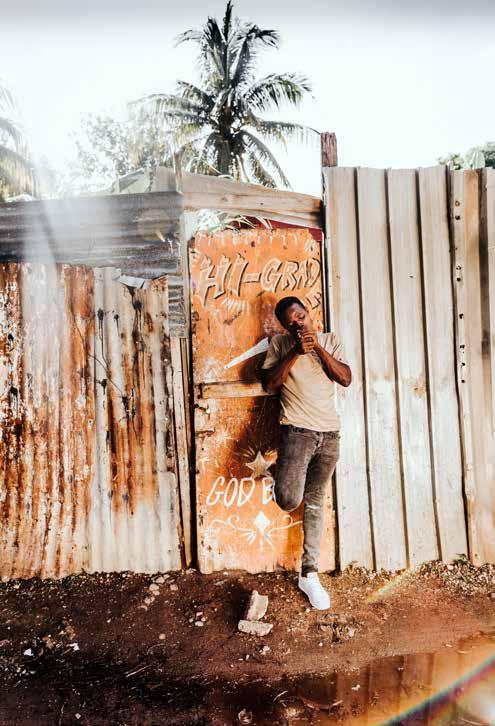
 by Olivier F / photos: The Green
by Olivier F / photos: The Green

SSFR: When was your first approach to cannabis?
Mr Green Wolf: We smoked our first joint when we were both about 15 years old. It was black market hash, not of good quality. However, we started growing right away. You know, Mrs Green Wolf and I have known each other for a long time.
What was it like when you first grew cannabis?
Mr GW: We started growing in 1996 and there was no internet back then. We learnt by reading some books. The strains were
unknown. We used seeds sold in bags on the black market; we grew them indoors using an HPS lamp, which had been given to us by a friend who worked in a hospital.
When did you start extracting and producing hashish?
Mr GW: We started in 2013, but we have been working professionally since 2017.
And you started making presses for extracting rosin...
Mr GW: When we arrived in Morocco in 2017, Butan Hash Oil (BHO) was all the rage.
This couple of French cannabis growers and hash makers settled in Morocco specialise in the production of superior quality hash using hi-tech equipment. El Professeur himself considers them the best hash makers on the scene. On social media they post beautiful photos and videos of their creations with different colours and textures.
But we quickly realised that the project was unviable. Butane extraction presents certain risks. So, we started producing presses for rosin. At the time, to get one, you had to buy it from the US and it cost USD5,000. That’s why we started making one for ourselves. Since I am a bit of a handyman, I made it at home from a hydraulic press, adding plates and control units.
What is the capacity of your rosin presses?
Mr GW: You can process up to 100 grams of hash, but I would recommend not exceeding 25-30 grams at a time for better quality. Rosin is always made from hash. Pressing cannabis flowers does not yield much product.
How did you end up working in the cannabis sector in Morocco?
Mme Green Wolf: Initially we just came to meet growers and see how they worked. And we realised we had a lot to offer to help them in their work.
Mr GW: We came here with feminised seeds, drip irrigation systems, we dug wells.... We gave advice and we also invested in this country.
Mme GW: The first years we were driven by a purely humanitarian spirit and contributed our knowledge and means. We didn’t even think of the opportunity to sell or export hash.
Was it difficult to convince them to change their habits?
Mme GW: Extremely difficult. First, they had to get to know what it is like and only then would they trust us. What they liked a lot was our rigour at work.
Mr GW: When you show that you know what you‘re talking about and produce the best quality ever, it‘s easy to be convincing... Using our seeds to produce hash, they went from a yield of 3% to an impressive 8%.
Mr GW: We learnt how to extract in large quantities.
Mme GW: For this kind of crops, we no longer speak of growing but of real farming.
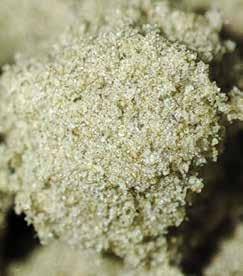

It is something very different from growing under a tent or in a grow room. They taught us this.
And today, do you grow your own crops?
Mr GW: We have Moroccan partners. You cannot have your own plot of land to till unless you are a Moroccan national. We have three cultivation sites in the Rif region, at an altitude of 700 and 1200 metres: one near Ketama, another near Bab Bered and another still near the Mediterranean coast.
I consider Bab Bered to be the capital of cannabis. It is here that the largest number of crops are grown. Each site has a different soil: in Ketama, it is very clayey, while in Bab Bered it is not bad and well looked after.
What is the total area under cultivation?
Mr GW: About 3 hectares in total.
What fertilisers do you use?
Mr GW: Fertilisation varies a little according to the soil. We prepare the soil with sheep manure. We also use some mineral fertiliser for farming.
Do you grow from seeds or from cuttings?
Mr GW: Only from seeds. It is very complicated to take cuttings in Morocco. The power grid is not the best and you have to store them all year round. We germinate the seeds between two sheets of kitchen paper. Then we put them in glass cups and, when the plants reach a height of 15 centimetres, we plant them in the ground about one metre apart from each other. We are lucky to have a team of breeders/seed producers in the south of Spain, who provide us with seeds that are perfectly suited to our crops.
Which strains do you grow in Morocco?
Mr GW: We mainly grow Bubble Gum, but also some trendy strains like Zkittles, Runtz, Do Si Dos….
Based on what criteria do you choose the strains to grow?
Mme GW: The main criterion is low water consumption and we always prioritise terpenes over yield.
How many plants do you grow per hectare?
Mr GW: About 10,000 plants per hectare.
What month do you start growing?
Mr GW: In April or May. It depends on the site. In Ketama and on the coast, we start a little earlier than in Bab Bered, where it is colder.
What are your cultivation techniques?
Mr GW: We do not prune or trellis our plants; that would be impossible with the quantity of specimens we grow. Nor would it be useful to split the stems by pruning the tip: when the wind blows, the plants would become more fragile. We simply defoliate them a little at the bottom.
What size do the plants reach?
Mr GW: 1.5 to 1.7 m. This year some strains reached up to 2.2 m.
What is the yield per plant?
Mr GW: I would say 300-400 g/plant.
Mme GW: But these plants are full of seeds. Even though we only grow feminised strains, our specimens are pollinated by plants in the neighbouring fields. It is impossible to grow seedless marijuana in Morocco.
Is there a chance to buy flowers for smoking in Morocco?
Mr GW: You can find some in the city, but they are often imported from Spain. Other than that, only hash from outdoor crops is produced. 50% of each bud is seeds.
What types of hash do you produce?
Mr GW: Dry sift, fresh frozen and ice-o-lator. Initially we wanted to extract rosin, but there was no market in Morocco. We produced a lot of rosin extract in Europe from the hashish we grew in Morocco.
What equipment do you use to produce ice-o-lator or fresh frozen?
Mr GW: We use olive oil bags from Pure Extract. They are 120 litre bags. We use 159/73 micron, 159/90 micron or 159/120 micron mesh, depending on the project. Most importantly, we have installed freezedryers, which allow us to increase the terpene content while preventing oxidation. We even had a cold room installed, like the one used in the food industry, to process and store the products.
In short, we have done great works, the likes of which are never done in this remote region. We also have deep freezers. To work, we set 0 degrees in the cold room, but the temperature can be set further down to minus 35 degrees.
The cold prevents the presence of hashishene (see Soft Secrets France 5-2023), which is a specific terpene of hashish...
Mr GW: Yes, the cold avoids oxidation, so there is no presence of the hashishene, which has long been found in all Moroccan hashish and dominates all the other terpenes.
Does this mean you can produce hash at any time of the year?
Mr GW: Actually, most growers have to wait
until it is cold enough to produce hash. In our cold-storage facilities, we can produce hash at any time of the year. We just spent two and a half months in Morocco producing hash.

Is your hash similar to what they call Piattella in Spain?
Mr GW: It is a bit different. It is also cold-cured hashish, but you cannot get the same quality in Morocco. The process is more complicated and we work with marijuana containing seeds. It is always better to work with seedless buds.
On social media there are beautiful pictures of your hashish and rosin products.
How do you produce your temple balls, for example?
Mr GW: Our temple balls are made using the Frenchy Cannoli method. You take a bottle filled with hot water and use it as a rolling pin. But I like temple balls less lately, because of the oxidation.
Are Moroccans welcoming?
Mme GW: They are very welcoming. Neither of us is of Moroccan origin and yet we managed to integrate. In Morocco, there is total freedom! It‘s a bit like France 70 years ago. If you don‘t step on anyone‘s toes, here you can really do what you want. You also get used to living with few material goods.

In the new season of 2024, Sweet Seeds® invites us all to join the fight for Cannabis freedom. With 6 new and potent strains, the brand is preparing to challenge the barriers and stigmas imposed for several decades in a period that will be remembered as a time of change and the consolidation of a free cannabis culture.
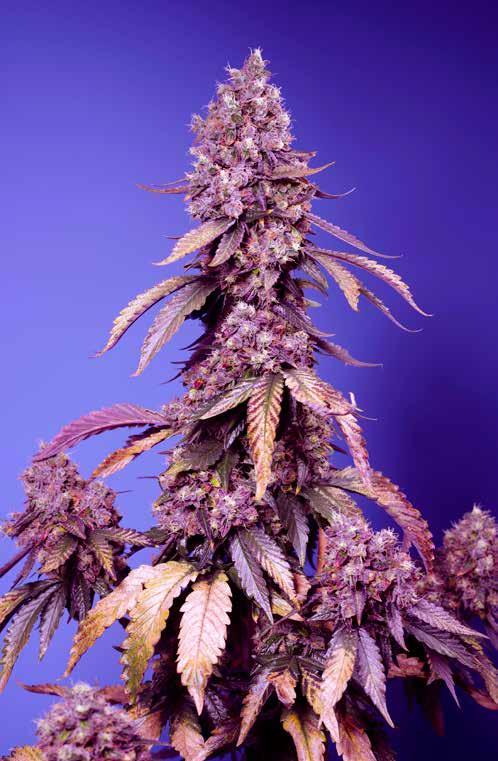
This coming season is expected to be a historic moment of resistance and transformation, where Sweet Seeds® invites us to raise our voices for freedom and the right to fairer and more honest laws for our beloved plant and, of course, its faithful users. It is a joint commitment between Sweet Seeds® and the cannabis community, united in the search for the long-yearned for cannabis freedom.

Another wonderful plant that stands out for the complexity of its aromas and flavours is Jealousy Z XL Auto® (SWS108). With hints of spice, orange and the distinctive sweet and sour notes of the Jealousy Z XL Auto.
To expand the seed collection of every grower, the seed bank presents us with top quality plants, some of them originating from the United States and all bearing the unmistakable Sweet Seeds® seal. Are you ready for the cannabis re-evolution?
Let‘s start our tour with the charming Jet Fuel Mandarine XL Auto® (SWS109), a sure bet for all lovers of stimulating and creative effects. Her dense buds exhale earthy citrus scents, while her flavours are reminiscent of ripe tangerines and mango. A unique combination that reflects
THE SEED BANK PRESENTS US WITH TOP QUALITY PLANTS, SOME OF THEM ORIGINATING FROM THE UNITED STATES AND ALL BEARING THE UNMISTAKABLE SWEET SEEDS® SEAL
the constant innovation of Sweet Seeds®
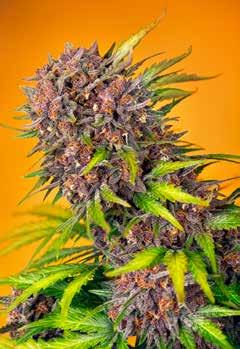

best Sour Diesel specimens, this strain promises a unique experience along with an explosion of flavours that will delight even the most discerning palates.
With much enthusiasm to surprise the most self-indulgent cannabis growers, the time has come for the presentation of Papaya Zoap Auto® (SWS107), a 9th generation autoflowering strain that is not only a delight for any palate with its fruity and citrus aromas, but also offers a generous production of resin-covered buds.
To round off the autoflowering range with a flagship product, Sweet Seeds® presents Diablo Rojo XL Auto® (SWS110). With its purple flowers and impressive yields, this strain offers sweet, citrus and incense aromas, with hints of red
To conclude with, we present a variety that will surely be an outstanding champion in cannabis cups, i.e. Papaya Zoap F1 Fast Version® (SWS112). Its US genetics – resulting from the combination of Bruce Banner Auto® (SWS91) x Papaya and Zkittlez x Zoap – generates a unique experience. Intense sweet and fruity aromas of mango, papaya and citrus mingle with earthy, smoky and spicy notes.
In this new year, Sweet Seeds® sends a clear message for freedom and responsible consumer rights. A resounding call goes out around the world: ‘Stand up for your high!’
The 2024 season is not only a time to grow plants, but also to cultivate awareness and

fruits that evoke cola; otherwise said, a real feast for the senses.
In photodependent strains, Sweet Seeds® offers two real hypersonic and powerful missiles that promise to take the cannabis experience to a new level. Black Muffin F1 Fast Version® (SWS111), with its ultra-fast flowering and red flowers, not only stands out for its stunningly beautiful aesthetics, but also for its intense and relaxing effect.
It has a very dense and powerful, bittersweet and fruity aroma with citrus notes and acidic hints of red berries.

determination to stand up for our rights as Cannabis enthusiasts and freedom supporters. With the commitment of Sweet Seeds® and your determination, the 2024 season looks to be a year of struggle in cannabis history. Together, growers and plant lovers are pushing towards a re-evolution that will change the cannabis scene and take Cannabis to new heights of freedom.
Thank you for being part of this cannabis re-evolution, the Sweet Seeds® team.


Growing a cannabis plant outdoors is one of the best experiences you can have, and a chance to see how plants naturally grow outside. You may have seen gardens in California that blew you away, and you have decided to give it a go for the first time. It is important to gather as much information as possible before you plan for the outdoors seasons, so in this article, I cover all you need to know when it comes to planting seeds outdoors this Spring as well as my top tips to help you on your way to becoming the best outdoor grower you can be!
Photoperiod or autoflowering?
There are pros and cons to growing autoflowering and photoperiod cannabis plants, however one may be better suited for you in terms of practicality, grow space, location, how much sun you will get over August and September and how discreet your garden will be.
The pros and cons of photoperiod
A photoperiod plant simply means it needs 18–24 hours of lights to vegetate and then 12 hours of darkness to flower. Indoor growers will commonly work with photoperiod cannabis seeds, as they are able to control the vegetative period, allowing them to train, clone and grow large sized plants.
The pros
• Outdoors photoperiod cannabis plants can grow very large when planted in Spring.
• It is possible to take clones off photoperiod plants once they are mature enough.
• It is easy to trigger the flowering period by providing 12 hours or more of darkness. Most growers are familiar with photoperiod plants and have plenty of experience.
The cons
• Outdoors you can only flower and harvest one time per year, usually October time.
• They can be prone to insect damage, hot temperatures and cold nights.
• Outdoors plants may be an easy target for thieves waiting for the harvest window.
• Not all strains will work well, especially in a colder climate such as North Europe.
The pros and cons of autoflowering Autos are quite opposite to photoperiod, by the fact that they will automatically flower after 4 weeks, regardless of if they are given 12/12. As a result, autos have a tendency to keep a low profile and reach a height of around 75-100 cm in height. Thanks to the fact they do not need a certain righting schedule, this means autos can be grown outdoors with perpetual harvests. Unlike photoperiods that throw out one large harvest towards the end of the year, autos can be planted from Spring time until late in the year, meaning you can get away with harvesting a 70-day auto and achieve three impressive harvests.
The pros
• Autos are tough and versatile plants that endure heavy winds, heat stress and the cold.
Ideal for a first time or beginner growers and require little maintenance or skill. You can plant autos on a roof terrace or sunny balcony in a hot climate.
• Growers who experience short summers will find autos will work well for them.
• Autos are very fast flowering varieties, making them a good choice for North Europe.
You can achieve perpetual harvests until late in the year under the right circumstances.
The cons
• Some autos can grow small and will produce a low yield compared to photoperiods.
• Growers living in cold climates can only grow autos during the Summer months.
• Autos do not like to be repotted, so it is best to plant them in one large pot.
• You cannot take clones off autos, unfortunately, so must always grow from seed.
When is the best time and method to germinate my seeds?
The short answer is it depends on how big you want your plants to be, however I recommend
planting as early as possible. That means around mid-April / May time if you are in the UK, Holland and Northern Europe as this will give you the best chances. There are various methods to germinate your cannabis seeds, and when it comes to planting outdoors, giving your seeds the best head start possible will pay off big time. I never recommend germinating the seeds directly into the ground outside, due to the risk of insects, birds and cold nighttime temperatures. Instead, try one of these methods.
Tissue paper
Germinating cannabis seeds this way, it takes between 1–3 days before a tap root will pop out, and the seed is ready to be transplanted.
It is important to keep the cup of water in a dark environment and after 2–5 days will see a bright white tap root on the seeds.
Using a coco or peat jiffy plug

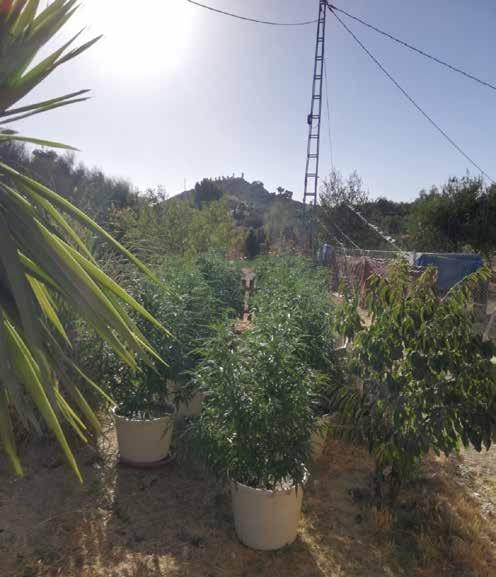
Insert your cannabis seeds 1 cm deep into the wet jiffy plug, cover the top and wait for the seed to germinate and pop up out of the jiffy. You should really have the jiffy plugs inside a propagator or under a light providing a warm ambience.
Location! Location! Location!
If you have the luxury of growing outdoors in the privacy of your own garden or countryside house, then make sure you locate where the sun sets and try and leave the plants in that area. During the seasons, the sun will change location and height, however where the sun sets will allow the plants to receive the most direct sunlight and set them up for a good harvest!
There is not much we can do about a nosey neighbour who is always wondering what you are up to. Trying to grow some pungent ganja outside may not work so well, when you have someone driving you mad and who may even call the authorities and pull the plug on your outdoor escapades. In the event you have a close-by neighbour, consider growing strains that are on the floral and fruity side, and avoid pungent varieties.
There is a special feeling you get when you have planted your seedlings directly into the ground, and know they have unlimited potential. Growing in pots has many benefits, but if you have the luxury of using your own organic flower beds, or a compost pile area, then there is no better than when plants are growing in the Earth. For those who have a poor quality flower bed that is depleted or life, then simply work with fabric pots or plastic pots, and you
darkness period the same way indoor plants do, and when there is an external light source entering the growing area such as a street lamp, security floodlight, passing headlights from cars driving past or parking, then this may cause issues once the plants are flowering.
Do your best to check for any other potential light sources and try to keep the plants consistently dark.
The most important thing is to encourage root growth, and this means to lightly water your plants and feed a small amount of nutrient solution. If you are using an organic soil growing medium, then I recommend to only use plain water and allow the beneficial bacteria, fungi and microorganisms to do their work.
Avoid over watering the plants, and wait until the growing medium has become close to dry
There is absolutely no point in growing a strain out which won’t get a full chance to mature due to poor weather. My top tip here is to work with an indica hybrid strain that flowers in 56 days or less, giving you the best chance to harvest a good yield and not worry about mould or mildew.
Top tip #2 - Autos keep a low profile
If you are worried that someone may see your outdoor plants, then why not give autos a go? Autos will grow to a medium height and can be planted alongside other companion plants, to help give them a bit of camouflage.
Top tip #3 - Start seeds off indoors
can still produce huge plants with a massive root zone and good yielding capability. I personally love to use felt fabric pots as they promote root pruning and also insulate the root zone during the colder months of the year.
Growing inside a greenhouse is a great way to protect your seedlings from the cold temperatures, rain and winds that can be expected when living in Europe. Poly tunnels work a treat when living in a hotter climate as they allow air to pass through the tunnels keeping the plants cool, whilst the plastic cover keeps U.V and prying eyes away. Shading nets are a lifesaver in countries like Spain and Greece, and can help plants stay lush green and healthy during heat waves. Building a custom sized polytunnel or shading net area is not expensive and, if well-built, will last for years.
Sometimes keeping your seedlings alive and protected from birds and insects can be the hardest part about growing outdoors. Slugs and snails are a nightmare and will chew your seedlings in half if given the chance, ants believe it or not will take your seeds back to their nest, birds can also peck out the seeds and cats can dig up soil and make a mess.
The best solutions to solving attacks on your precious seedlings, is to keep them in a propagator, greenhouse or just bring them inside with you at night for the first few weeks, or place a pint sized cup over your pots and secure it down with cello tape.
Outdoor plants require an uninterrupted

This grower has added bamboo canes to support the branches.
before watering. As your plants get older, then the best times to feed them will be early in the morning just after sunrise, and late in the evening after sunset. Watering in this way will allow the plants to drink and transpire as they need, without suffering from heat stress over the hotter months.
My 4 top tips to consider
Top tip #1 - Fast flowering strains may be best
This does not mean you have to power up your 600w HPS for 2 weeks, but rather to use CFL or LED strip lights. Giving your seedlings a few weeks inside a propagator can give them the head start they truly need, and by the time they are transplanted outside, they will have a much better chance of survival and growing into a healthy and sturdy plant.
Top tip #4 - Invest in a good quality soil
Do not buy cheap soil that contains little mineral and nutrient content, accompanied by poor drainage and water retention.
My top tip here is to spend a little extra and buy a well known brand of soil, that will give you the peace of mind that the roots have plenty of air, moisture and access to slow release nutrients.

The use of additional UV light sources in cultivation under artificial lighting is a hot topic. Many believe that by adding this type of lighting, plants will be induced to produce a larger quantity of cannabinoids and achieve better yields. However, numerous studies show that the benefits of UV radiation are not so straightforward and depend on various factors.
Firstly, it‘s important to remember that UV radiation is divided into three groups: UV-A radiation with a wavelength range of 315–400 nm, UV-B radiation in the range of 280–315 nm, and UV-C radiation in the area of 100–280 nm. Any light outside these ranges does not belong to the UV spectrum. I mention this because some manufacturers of lighting for cannabis cultivation claim that their lighting has enhanced performance in the UV spectrum at wavelengths above 400 nm. This is merely a marketing trick, as this area already contains regular blue light falling into the sphere of photosynthetically active radiation (PAR).
Yes, it‘s a very simple equation. The greater the intensity of light you provide to cannabis plants, the higher the yield you can expect. Many studies have been conducted on this topic, confirming this fact. However, I must add that high intensity alone is not enough and other conditions must be met to increase yield, such as the right climate, sufficient CO2, proper nutrition, and more. Nonetheless, I‘m not writing this article to convey such trivial information.
The reason I mention intensity is to clarify some tests designed to demonstrate the efficacy of supplemental lighting. If you take any light source for growing plants and add another light source that includes light in the PAR spectrum, you are increasing the intensity of light usable for photosynthesis. Therefore, when testing the benefits of supplemental lighting emitting light at a wavelength of 420 nm (which is not UV), you‘re not testing the effect of that specific wavelength, but simply increasing the
lighting intensity, which always has a positive effect on yield. If you want to investigate the difference in yield related to the spectral composition of light, you should always test two identical intensities.
According to some older studies, this type of radiation increases the production of CBD, CBG, THC, and THCV. The initial studies from the 1980s are now quite dated. UV-A radiation easily penetrates the atmosphere and plants, humans, and other living organisms have had ample time to adapt to this type of radiation throughout evolution. Compared to UV-B radiation, this type of UV radiation has lower energy, so theoretically, a larger dose is required to achieve the same effect.
Promoting the positive impact of UV-A radiation seems often to be a marketing tactic by some LED lighting manufacturers, though I do not mean to suggest that they intentionally aim to deceive. However, highlighting the potential effect of specifically UV-A radiation also may be related to the expansion of LED technology, which so far is not sufficiently effective in the UV-B spectrum. While LED diodes in the UV-A spectrum have an efficiency of converting electricity to light of 50%, in the UV-B spectrum, it is less than 10%, not to mention up to ten times shorter lifespan. For the use of supplemental lighting in the UV-B spectrum, fluorescent lamps are far more efficient.
Several research teams have tested the effects of UV-A and UV-B radiation, and some of them concluded that UV-A radiation rather decreases the efficiency of light use. For example, the journal Frontiers in Plant Science published a study by a team from the Canadian University of Guelph focused on environmental science. Scientists tested the effect of changing light intensity on cannabis yield and the influence of UV-A and UV-B radiation. The study was published on October 27, 2022, making it relatively new.

UV-A along with UV-B led to an increase in THC only in the larger sugar leaves.
The researchers created three groups of test plants. The first group was illuminated with a PPFD intensity of 600 μmol/m2s for 12 hours over 45 days, the second group received an additional dose of 50 μmol/m2s of UV-A
radiation with the highest performance in the 385 nm area, also for 12 hours over 45 days. The third group also received a dose of PPFD at 600 μmol/m2s for 12 hours over 45 days, but in addition, 3 μmol/m2s from
lighting containing both UV-A and UV-B radiation, only during the last 20 days of the growth cycle. Although the group of plants grown with additional UV-A radiation was illuminated with a greater amount of light, 600+50 μmol/m2s, there was no increase in THC production compared to the group without additional lighting.
This means that the efficiency of cultivation decreases when using UV-A radiation. Conversely, in the group where additional UV-A + UV-B lighting was used, there was an increase in THC production by more than 30%. Unfortunately, this increase was significant only in the larger sugar leaves. In analyses of whole flowers, a provable increase in THC content was not confirmed, or was only up to 10%, which cannot be considered confirmation that it is solely the result of UV radiation.
The result of another experiment, conducted in the research greenhouse of the company SANlight, even showed that the use of additional lighting with a UV-A spectrum with the highest performance in the 365 nm area led to a decrease in terpene production. This would support the theory that UV-A radiation has the potential to accelerate the photooxidation of terpenes, which can lead to their degradation or transformation into other compounds.
Plants are equipped with special sensors known as photoreceptors to process light of various wavelengths. Cryptochromes serve plants for detecting radiation in the wavelengths of 320–350 nm, meaning they detect both UV-A radiation and blue light. For UV-B radiation, however, plants have a special sensor called UVR8, which triggers
defense mechanisms in plants. Therefore, it is assumed that UV-B radiation truly can initiate the defense system of cannabis and
possibly encourage it to produce more resin. The question remains whether the plant creates a protective layer everywhere we

FOR UV-B RADIATION PLANTS HAVE A SPECIAL SENSOR CALLED UVR8, WHICH TRIGGERS DEFENSE MECHANISMS IN PLANTS

would need it or only in the most exposed areas. In the previously mentioned study, the result of exposing plants to UV-B radiation was noticeable only on some leaves. Does this mean that plants respond to UV-B radiation by higher production of glandular trichomes with resin only in places where their concentration is usually lower? Further studies may provide an answer.
One of the studies supporting the claim that UV-B radiation can significantly increase the THC content is the work of John Lyndon from 1987. In his experiment, the THC content in flowers of plants exposed to 40 days of UV-B radiation increased from 2.5% to 3.1%. Expressed in percentage terms, this was an increase of nearly 25%. In absolute numbers, however, this is a 0.6% increase in THC. If a cannabis strain achieving a THC content of 20% experienced an increase in absolute THC content by 0.6%, it would not be a substantial increase. And this is quite specific to cannabis. A difference in the content of major cannabinoids in the range of 0.5% is not exceptional, both in the case of low-potency and high-potency strains. The efficacy of UV-B radiation in enhancing cannabinoid production is questioned by three additional studies. One of them is co-authored by the renowned expert in lighting for plant cultivation with extensive experience in cannabis cultivation, Dr. Bruce Bugbee. His study, published on August 11, 2023, in the journal Frontiers of Science, concludes that the combination of UV-A and UV-B radiation does not have a demonstrable effect on cannabinoid production. However, this experiment was conducted on CBD strains with a low THC content.
Another study by the University of Guelph worked with strains that have higher levels of the main cannabinoids. Breaking Wave and Low Tide, both with a balanced CBD and THC ratio. In their study, Victoria RodriguezMorrison, David Llewellyn, and Youbin Zheng used a standard lighting intensity of PPFD 225-400 μmol/m2s and added various doses of UV-B radiation at a wavelength of 287 nm. The plants were exposed to UV-B radiation for 3.5 hours a day during the flowering phase.
The outcome of the experiment brought surprising results. Not only was there no increase in cannabinoid production, but there was actually a decrease. Moreover, plants exposed to the highest dose of UV-B exhibited slowed growth, smaller size, leaf deformation, or premature browning of the stigmas. The authors of the study conclude that “The present study suggests that using UV radiation as a production tool did not lead to any commercially relevant benefits to cannabis yield or inflorescence secondary metabolite (cannabinoid and terpenes) composition.”
Research in the field of the impact of UV radiation on cannabis will still require a lot of effort to confirm or completely refute its positive effect on cannabinoid production. I will continue to monitor new insights for you, and you will read about them in your favorite Soft Secrets. In the meantime, do not throw away your additional UV lamps yet.
 With Jorge Cervantes jorge@marijuanagrowing.com
With Jorge Cervantes jorge@marijuanagrowing.com
A seed contains all the genetic characteristics of a cannabis plant. The genes within a seed dictate a plant‘s size, disease and pest resistance, root, stem, leaf and flower production, cannabinoid levels and many other traits. Seeds are the result of sexual propagation and contain genes from each parent, male and female. Some plants, known as “intersex” plants, mistakenly referred to as ¨hermaphrodites, ¨ bear both male and female flowers on the same plant.
The genetic makeup of a seed is the single most important factor dictating how well a plant will grow in different climates and under artificial light, sunlight and light available inside a greenhouse. Genetic characteristics also control the maximum
amounts of cannabinoids a plant is able to produce. However, growth conditions also affect cannabinoid levels. A poorly grown plant produces lower levels of cannabinoids than a healthy well-grown plant.
The main categories of seeds include (1) regular seeds (2) feminized seeds (3) auto-flowering regular seeds and (4) auto-flowering feminized seeds. Regular seeds are becoming less common in many parts of the world and numerous seeds companies offer only feminized seeds. Feminized seeds are very popular because they grow into female plants that have a high cannabinoid content. However, unstable feminized plants may occasionally develop male flowers, AKA intersex or
THCCannabis Male Female Seeds FemaleClone
Regular x x x x
Feminized 0 x x x
Auto-flower x x x 0
Auto-flower Fem 0 x x 0


This group of little seedlings are being grown to move outdoors.
CBDCannabis Male Female Seeds FemaleClone
Regular x x x x
Feminized 0 x x x
Auto-flower x x x 0
Auto-flower Fem 0 x x 0
Industrial Hemp x x x x
hermaphrodites. Strong viable seeds are produced by healthy parents that receive proper care. Seeds that have been stored properly germinate quickly and grow into healthy plants that produce heavy harvests. Seeds stored too long will germinate slowly and have a higher rate of failure. Vigorous seeds germinate within 48-72 hours and sprout aboveground within seven days.
Seeds that take more than a week to germinate may grow slowly and produce less. However, some varieties take longer to germinate even under the best conditions.
Avoid weak seeds. If the outer protective shell does not properly seal, a little moisture and air penetrate and try to activate growth.
Seed hormone concentrations dissipate, and seeds become progressively less viable. Moisture-permeable seeds signal diseases and pests to move in.
Weak seeds are immature, light-colored, fragile and crush easily with slight pressure between finger and thumb.
Weak seeds do not have enough strength to grow properly.
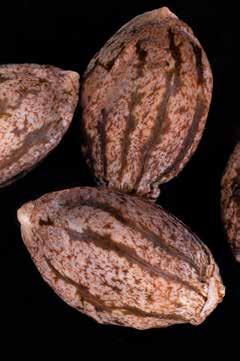
Buy seeds in packages of 1, 3, 5, 10 and more. Selling very small quantities of seeds started with feminized seeds that are guaranteed to be female. But if a seed does not sprout or the seedling is weak and sickly, there is no backup sibling to take its place. I advise to start with at least three feminized or auto-flowering seeds and 5-10 regular seeds from each variety. If you have room and the budget, start 10 seeds of each variety. To help ensure a crop, start more seeds than you plan to harvest.
Starting a single seed of a variety makes comparing it to siblings impossible. If you start with a bag of ten regular seeds from a reputable supplier and germinate them all at once, about half will be male, one or two could grow slowly or be less cannabinoid potent. Two or three seeds will grow into strong, potent females. Of these females, one will be more robust and potent than her siblings. Select this “super” female to be the mother of your clones.
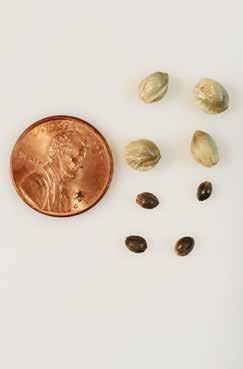
and large
Cannabis seeds need only (clean) water, heat and air to germinate. Typically seeds germinate best at 25ºC. Lower temperatures often delay germination. Above 25ºC disrupts chemistry in the seed and causes poor germination. Do your best to keep the humidity at 100 percent during germination. But soaking seeds in water more than 24 hours will cut off oxygen, essentially drowning and killing them.
At germination, moisture causes the outside protective shell of the seed to split. Moisture continues to wick in to trigger the dormant hormones that activate the small white radicle. The radicle penetrates the soil transforming into the tap root and green growth aboveground. Cotyledon, or seed leaves, emerge from within the shell as they push upward in search of light. A constant stream of moisture is essential to transport water, nutrients, and hormones for rapid growth. If seedlings suffer water stress now, they will take weeks to recover. Auto-flowering seeds and seedlings are extremely susceptible to moisture, heat, and oxygen stress.
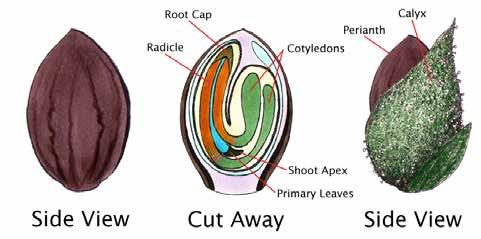
A seed consists of an embryo containing genes and a supply of food bundled in a protective outer coating. Mature viable seeds are hard, beige to dark brown and spotted or mottled have the highest germination rate. Soft, pale, or green seeds are usually immature and should be avoided. Immature seeds germinate poorly and often produce sickly plants. Viable, fresh, dry, mature seeds less than a year-old sprout quickly (24-48 hours) and grow robust plants.
Seeds do not need extra hormones or fertilizer to germinate.

Just cracking open to let the tip of the radical out to explore for food and water.
TIMELINE TO GERMINATE STRONG VIABLE SEEDS AND GROW INTO GROW INTO SEEDLINGS
Seeds absorb water in the presence of air to initiate germination.
At 48-72 hours the white root tip (radicle) is visible
At 4-7 days roots grow, seed sprouts aboveground.
At 5-8 days cotyledon leaves open
At 6-9 days true leaves are visible
At 6-21 days roots develop, little foliage grows.
At 21-25 days root system matures and opposing leaves grow
At 25-30 days seedlings are ready to start vegetative growth
Once seeds grow a specialized root system, cell growth accelerates; stem, foliage and roots develop quickly. Promote this natural growth and harvest heavy. Seeds that do not root and start strong growth, often grow slowly later.
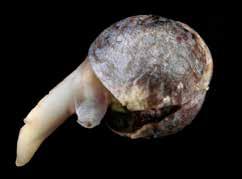
This little rootlet is already sending out a second root.
This article is supported by the Cannabis Encyclopedia, ¡¡FREE!! in Eleven (11) lanuages – Czech, Dutch, English, French, Italian, Japanese, German, Portuguese, Russian, Spanish, and Ukranian at, www.marijuanagrowing.com.
Award-Winning cannabis cultivation author Jorge Cervantes teams up with Seedsman for a FREE, comprehensive digital book on home growing.
100-page digital book
270+ color images
Interactive – Searchable
Comprehensive guide to cannabis cultivation


Beginner and advanced growers
Easy-to-follow cultivation examples
8 chapters of cultivation wisdom
Dedicated to increasing cannabis yields
Discover the magic of cannabis!
www.marijuanagrowing.com/grow-cannabis-book
Co-Authors
Chief Scientific Officer, Dr. Gary Yates
Stefan Meyer
Table of Contents
• Cannabis Botany
• Life Cycle of Cannabis
• Cannabis Seeds & Seedlings
• Plan Your Garden
• Grow Room Setup
• Twelve-week Garden
• Harvest, Manicuring, Drying, Curing & Storage
• Diseases, Pests & Problems

Author Marijuana Horticulture.
Legendary Jorge Cervantes, published in eight languages sold over a million copies worldwide.

In the vibrant tapestry of music and culture, there’s a figure who stands tall, not just for his lyrical prowess but also for his unabashed love for the green leaf, and that’s Snoop Dogg. From sparking up in his music videos to launching his own line of cannabis products, the West Coat rapper has become synonymous with both the sound of the streets and the scent of Mary Jane, seamlessly blending his passion for music with his devotion to the plant.
Born Calvin Cordozar Broadus Jr., this West Coast legend has etched his name in the annals of hip-hop history, all while championing cannabis and navigating a fair share of controversies.
Picture this: the early ‚90s, when hip-hop was hitting its stride, and Snoop Dogg emerged from the streets of Long Beach, California, like a comet. Teaming up with the legendary Dr. Dre, he dropped his debut album „Doggystyle“ in ‚93, and the world collectively bobbed its head to hits like „Gin and Juice“ and „What‘s My Name?“ Snoop‘s smooth flow and laid-back style were like a breath of fresh air in the rap game, earning him legions of fans worldwide.
But Snoop wasn‘t just about making music; he was about making waves. Enter his love affair with cannabis, a relationship as enduring as his beats. Snoop Dogg‘s relationship with cannabis goes far beyond just lyrical content or personal use; it‘s deeply intertwined with his entrepreneurial spirit and his commitment

to advocacy. Recognizing the burgeoning market and the shifting attitudes towards cannabis, Snoop has positioned himself as a key player in the emerging canna-business landscape. Leveraging his fame and influence, he‘s ventured into the industry with gusto, establishing himself as more than just a consumer but a visionary in the field.
In addition to his music career, Snoop has donned the hat of an entrepreneur, venturing into the cannabis industry with his own line of products. His brand, Leafs By Snoop, offers a range of cannabis-related products, including flowers, concentrates, and edibles, all bearing his stamp of approval.
By lending his name and expertise to these products, Snoop has not only tapped into a lucrative market but has also helped to destigmatize cannabis use and promote responsible consumption.
Moreover, Snoop Dogg has been a vocal advocate for the legalization of cannabis for decades, recognizing its medicinal benefits and challenging the societal taboos surrounding its use. He‘s used his platform to champion legalization efforts, speaking out against outdated drug policies and advocating for the decriminalization of marijuana possession.
Through his activism and outspokenness, Snoop has helped to shift public perception and pave the way for legislative changes across the US.
Beyond his business ventures and advocacy work, Snoop Dogg‘s impact on the cannabis industry extends far beyond his music or personal consumption habits. He‘s been a driving force behind the normalization and commercialization of cannabis, leveraging his influence to shape the conversation and challenge the status quo. Whether through his entrepreneurial endeavors, advocacy efforts, or cultural contributions, Snoop Dogg has left an indelible mark on the cannabis world, blazing trails where others feared to tread.
But let‘s not forget the controversies. Snoop Dogg‘s journey hasn‘t been all smooth sailing. He‘s faced his fair share of legal troubles, from run-ins with the law to highly publicized feuds with fellow artists like Eminem or Iggy Azalea. One such feud famously brewed between him and former President Donald Trump. The rapper trolled the former president in 2017 with his „Lavender“ video and his „Make America Crip Again“ EP, leading to a juicy Twitter spat between the two.
However, Snoop Dogg has recently extended an olive branch to the former US president,
stating that he had „nothing but love and respect for him.“ The Doggystyle star specifically cited Trump’s 2021 decision to pardon Michael “Harry-O” Harris, the co-founder of Death Row Records, who served time for attempted murder and drug offenses after his 1988 conviction.
But this latest statement of the West Coast rapper has had nevertheless the heads of many turn, waiting for a (mostly improbable) public endorsement of the (mostly probable) Republican candidate in the upcoming US presidential election.
In conclusion, as we look at Snoop Dogg‘s legacy, it‘s clear that he‘s more than just a rapper or a stoner icon; Snoop is a cultural phenomenon. His music has provided the soundtrack to countless lives, his advocacy has sparked conversations, and his resilience has inspired millions. He‘s shown us that it‘s okay to be different, to challenge the status quo, and to never apologize for who you are.
So here‘s to Snoop Dogg – the D-O-double-G, the king of the West Coast, the ambassador of cannabis, and the undisputed champion of cool. Long may he reign, blazing trails and dropping beats like only he can.

A very potent and potentially toxic strain of weed known as “Creepy” is in high demand in Latin America.
Government experts acknowledge that Creepy itself is not a new drug, but its contents and effects have raised serious concerns in many countries. The origin of this particular marijuana strain has been traced back to Venezuela and Colombia.
Vice News recently reported that over the past few years the powerful Creepy (a.k.a. krippy, cripi or cr1p1) has proliferated around Latin America, being found everywhere from Chile to Costa Rica. referenced in music by everyone from Bad Bunny to Pablo Chill-E. In Chile, the street price of one gram is around $1. Buying an entire kilo wholesale costs circa $14.
Experts claim Creepy has very high levels of THC (as high as 28%) and sometimes a wide range of dangerous side effects, like panic attacks. Ximena Steinberg Acuña, an investigator at the Chilean non-profit Science Foundation for Cannabis, told Vice reporter Nathaniel Janowitz that while the government has an “exact definition” of what Creepy is as “genetically modified marijuana” from Colombia, she wasn’t so sure. On the streets, Creepy weed is everywhere in different forms. She suspects that what’s being called Creepy in Chile may in fact be mixed with “synthetic cannabis“.
Maybe the whole hype and scare about Creepy is an exaggeration and just another example of government drug hysteria. But the problem of the modern creepy illegal drug scene is real and it has already manifested itself a couple of times in recent years.
Laced drugs are nothing new, but the combinations have been becoming more and more dangerous, eg. fentanyl-laced cocaine. Fentanyl, Big-Pharma’s recent opioid moneymaker, is approximately 50 times more potent than heroin and 100 times more potent than morphine. It carries a high risk of overdose.
Cannabis has sometimes been found laced with opioids or dangerous synthetic cannabinoids. „Synthetic marihuana/cannabinoids“ are a class of designer drug molecules that have been marketed as herbal incense, or „herbal smoking

blends“, and sold under common names like Spice. There have been several deaths linked to synthetic cannabinoids in many countries, even after taking just one hit of smoke (sic!).
New psychoactive substances (NPS) are defined as substances of abuse that are not controlled, but which may pose a public health threat. Studies show that the states or countries that had been hit hardest by NPS like synthetic cannabinoids in the last decade were the ones with the harshest anti-cannabis and anti-drug laws, like parts of the U.S., the U.K., and Poland.
If the racist War On (some) Drugs continues in its many unpredictable and bloody ways, we‘re bound to see many innovations much more troublesome than Spice.
The example of the „world‘s deadliest drug“ Krokodil, a Russian „heroin for the poor“, gives us an idea of the prohibition future ahead.
Such varieties of ‚traditional‘ drugs like heroin, which is not really old after all, may be followed by even stronger brand new formulas. Such formulas already exist, but fortunately they are not as easy and cheap to produce as Krokodil.
Racists of all sorts and breeds, working in the labs of powerful drug cartels or fallen states, terrorists, or just an ordinary psychopath using AI could one day develop a truly dangerous product. The more addictive the drug, the better for business and holy war, and the worse for the enemy.
Consumers will be faced with ever more sophisticated new drugs. One dreads to think what might happen if a cheap super-addictive drug is invented. One plot that may become reality in the near future is shown in the movie „51st State / Formula“, starring Samuel L. Jackson as a scientist working for English gangsters. The 51st state of the U.S. - and the
testing ground for a new drug in this movie - is the U.K. But it could be any country in the world: a similar scenario is likely everywhere.
Since science can‘t control the potent drugs with which it has blessed unsuspecting humans, the only sensible step is to separate popular stimulants of natural origin (so-called ‚soft drugs‘) from the more dangerous synthetic products of modern chemistry (‚hard drugs‘). That‘s what the Netherlands did in 1971.
Legalizing weed is just the first step to controlling and regulating the crazy mess prohibition created that drives today’s new drug culture.
It is worth noting that despite the stillwidespread illegality of cannabis, the existence of a prohibition-related black market, and the many harmful additives in the product, smoking cannabis is not considered by medical authorities to be an activity that has a negative impact on the public or a user‘s health, including the risk of lung cancer.
Growing your own cannabis is a good way to reduce health and safety risks. It now has been acknowledged and permitted by many expert commissions and governments.
It is finally becoming clear to lawmakers that prohibition, with its lack of quality control, is leading to the flood of many NPS or poorquality products with admixtures of dangerous substances on the market, resulting in many serious health and social problems.


le-led stoner comedies. These leading ladies deserve a sequel with a budget higher than their on-screen antics because, let’s face it, they’re carrying this joint with style. And let’s not forget Blaise – the real MVP of the cast. Here’s to hoping for more adventures with our favorite characters, bigger budgets, and maybe a few more green lushous plants along the way.
READLET’S GET BAKED COOKBOOK: REDEFINING CANNABIS CUISINE THROUGH A LENS OF CULTURE, HERITAGE AND EDUCATION
Step into the tantalizing world of cannabis cuisine, where chefs and mixologists are breaking through stereotypes with a dash of flair and a sprinkle
Prepare to blaze a trail through the stoner comedy scene with MTV’s latest offering: “Pretty Stoned.” This time, it’s the ladies who take the spotlight as Pretty Vee and Paris Berelc team up as Stella and Darcy, two gals who accidentally flush $20,000 worth of fine product down the loo as a spicy act of revenge. Now, they’re in deep with the formidable drug Queen Pin Madame X and her muscle, Tik Tock (played by the fierce Brandee Evans). Let’s get real with a no-nonsense review: if you’re into puffing the magic dragon and admiring fabulous derrieres, this one’s for you. Seriously, there’s more booty in this movie than a Kardashian family reunion. And get this – despite the title, you won’t see a single bud on screen, just some pre-rolled joints and bongs with emptier bowls than your snack stash after a midnight munchies run. Sure, “Pretty Stoned” may not have Hollywood’s bankroll behind it, and it’s surely not Oscar-worthy, but it’s got heart – and cracks that show its budget. Still, I’m lighting up with the hope that this sparks a fire for more fema-

of green magic. Forget what you thought you knew about weed-infused dishes – it’s a brave new culinary frontier! Meet the dynamic duo shaking up the scene: Haejin Chun and Jamie Evans. They’ve whipped up a cookbook that’s not just about cooking; it’s a flavorful journey blending heritage, culture, and culinary exper-
tise with a side of ganja. Their masterpiece, “Let’s Get Baked Cookbook,” isn’t just any old recipe collection – it’s got the golden seal of approval from High Times, the holy grail of all things cannabis.
Inside, you’ll find over 60 mouthwatering recipes (including some straight from guest chefs) that’ll make your taste buds sing. From Juiced Canna Leaf Dumplings to Infused Peanut Butter, they’ve got your cravings covered. But it’s not just about food – they’ve also concocted some killer drink recipes like the Serrano Pineapple Margarita and the legendary Dankest Over-The-Top Kimchi Bloody Mary, complete with a mini cheeseburger garnish. Now that’s what I call a cocktail!

But wait, there’s more! Chun and Evans spill the beans on how to whip up your own cannabis infusions, ensuring your canna-cocktails and desserts reach peak perfection. And for Chun, it’s not just about cooking – it’s a journey through her Korean-American roots. Meanwhile, Evans brings her expertise in cannabis and wine to the table, making this duo a force to be reckoned with.
So, if you’re ready to elevate your culinary game and dive headfirst into a world where weed and wellness collide, grab a copy of “Let’s Get Baked Cookbook” and let the good times roll – and bake!
Hold onto your hats, folks, because we’re diving headfirst into a true crime mystery that’s got the whole world buzzing. JuicyFields – ever heard of it? Well, if you’re one of the thousands of investors who got tangled up in this cannabis crowdfunding con, you’re about to get an education in the school of hard knocks.
Picture this: promises of fat stacks from investing in medicinal cannabis, dreams of green filling investors’ heads like a hazy cloud. But when JuicyFields vanished into thin air in July 2022, it took more than just smoke and mirrors – it took people’s life savings with it. Cue the criminal investigations, the raids, the frozen accounts. It’s a tale as old as time: trust misplaced, dreams shattered, and perpetrators slipping into the shadows like ghosts. Now, buckle up because we’re talking serious money here – we’re talking hundreds of millions, maybe even billions, swirling down the drain. Some whisper of Russian mafia ties, others point fingers at South American drug lords, and heck, there’s even talk of fake German nobility thrown into the mix. But who’s pulling the strings? Who’s the mastermind behind this high-stakes hustle?
Enter “Cannabis Cowboys,” your ticket to the wild ride of uncovering the truth. Hosts Andreas Becker and Nicolas Martin are your guides through the maze of deception, where every twist and turn reveals a stranger-than-fiction tale that’ll leave you questioning everything. So, grab your headphones and prepare to be hooked, because this ain’t your grandma’s bedtime story. “Cannabis Cowboys” is brought to you by DW - that’s short for Deutsche Welle, Germany’s very own international broadcaster since 1953 - and is available online at dw.com
that’s best savored from time to time, preferably with a little something extra in hand.
World wide there is a process going on of relative liberalisation towards the use of cannabis, be it for medicinal or recreational purposes. Several countries legalised cannabis as a way of separating soft and hard drugs, as it has proven to do in Holland. Other countries legalised the use of medicinal cannabis, including the right to grow cannabis plants for one’s own use. The publisher wants to highlight the process of normalisation of cannabis use. This assumes that the publisher does not necessarily agree with everything that appears in articles and advertisements. The publisher therefore distances himself explicitly from published statements or images that might give the impression that an endorsement is being made for the use and/or production of cannabis.
Nothing from this publication may be copied or reproduced in any format without prior permission from the publisher and other copyright holders. The publisher is not responsible for the content and/or point of view of advertisements. The editor takes no responsibility for unsollicited submissions.
The publisher has endeavored to reach all copyright holders of photos and/or images. Those who still believe they are entitled to these rights may contact the publisher.


